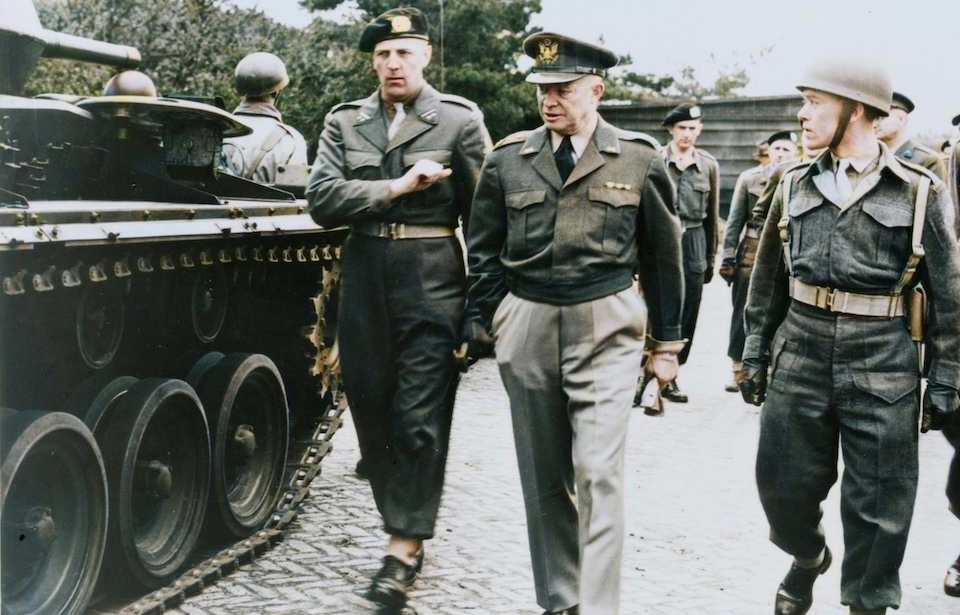During World War II, General Dwight D. Eisenhower visited the Ohrdruf concentration camp shortly after its liberation and was deeply shaken by the atrocities he witnessed. The brutal conditions and suffering he encountered left an indelible mark on him. Determined to ensure that the horrors of the camp would never be forgotten or denied, Eisenhower ordered thorough documentation of the camp’s conditions. He also invited members of Congress, military leaders, and journalists to visit the site personally. Eisenhower believed it was essential for the American people to fully understand the scale of the atrocities and for history to accurately reflect the devastating impact of the Holocaust.
Ohrdruf concentration camp
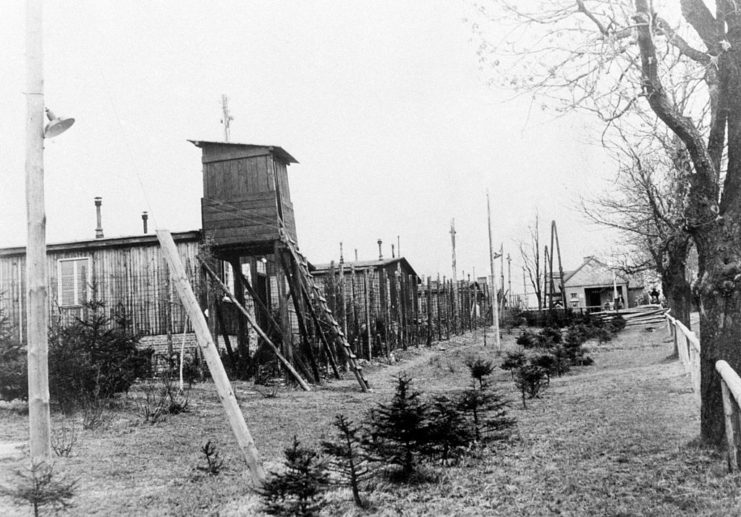
The Ohrdruf concentration camp was established in November 1944 near Gotha, Germany, as a subcamp of Buchenwald, which was located about 30 miles away. The camp’s primary mission was to force prisoners to build a railway connecting to a planned communications center beneath Mühlberg Castle.
At Ohrdruf, prisoners were tasked with constructing tunnels through the nearby mountains, a dangerous job that involved blasting by local workers and then clearing the debris. These tunnels were designed as emergency shelters for Hitler’s train and mobile command center in case he needed to flee Berlin.
The conditions at Ohrdruf were brutal. Prisoners were provided no protective gear and were forced to work in hazardous conditions, with many already weakened by malnutrition and fatigue. This resulted in widespread injuries and death as the prisoners struggled to complete the grueling labor under harsh supervision.
Death march to Buchenwald
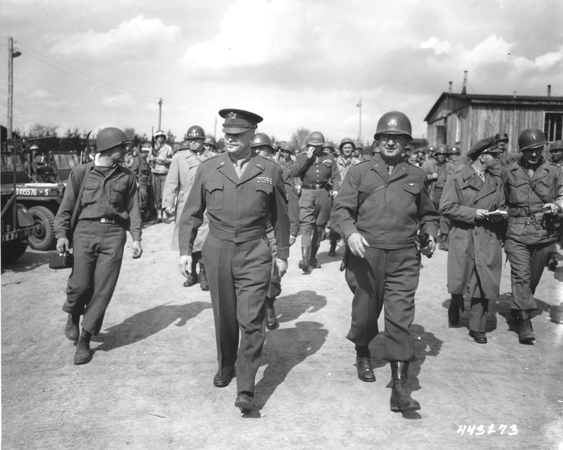
By March 1945, approximately 11,700 prisoners were held at the Ohrdruf concentration camp. They came from many different countries, including France, Belgium, Germany, Poland, Hungary, the Czech Republic, Russia, Latvia, Italy, Ukraine, and Yugoslavia. Jewish people and homosexuals were also among those imprisoned.
In early April 1945, as Allied forces drew near, the German guards began evacuating many of the prisoners, forcing them on a death march toward the Buchenwald camp. Those who were too weak, ill, or unable to keep going were executed.
Eisenhower witnesses the horrors of the Holocaust firsthand
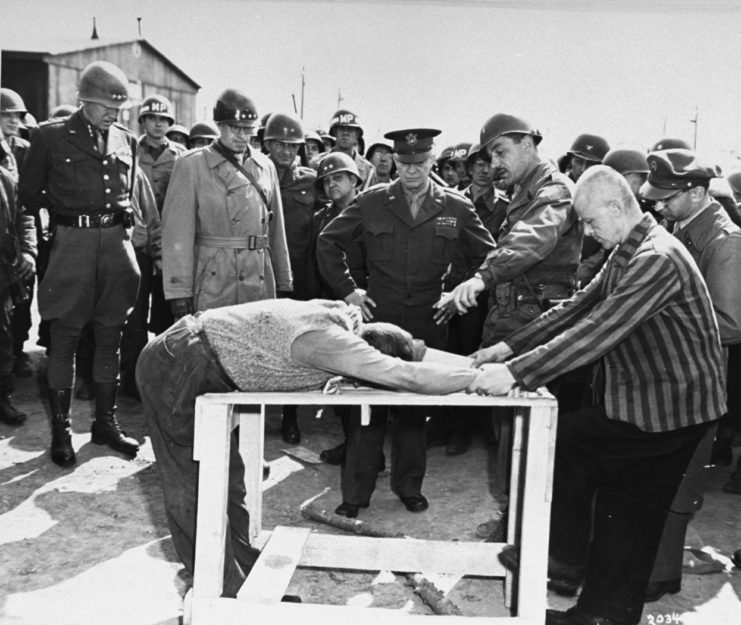
On April 12, 1945, General Eisenhower, accompanied by Gen. George Patton and Omar Bradley, visited Ohrdruf completely unprepared for the horrors awaiting them. Until that visit, Eisenhower had not fully grasped the extent of the atrocities committed by the Germans or the grim reality of the Holocaust.
During their tour, the delegation encountered a smoldering pyre, its charred remains serving as a grim testament to the prisoners’ brutal mistreatment. The evidence suggested that the guards had made a rushed attempt to hide their crimes. Survivors courageously shared accounts of the cruel methods inflicted upon them by their captors.
Patton couldn’t enter one area of the concentration camp
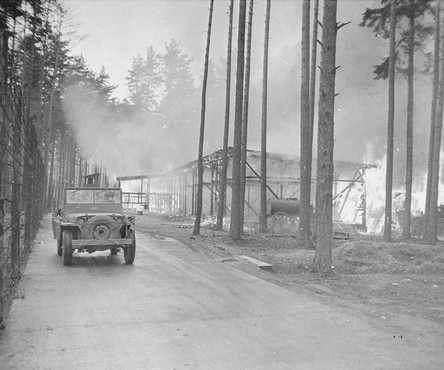
A closer look at Ohrdruf led to the discovery of a shed containing about 30 emaciated corpses. The bodies were dusted with lime, seemingly an attempt to mask the overpowering stench. The sight and odor were so appalling that Patton could not bring himself to enter the room.
Eisenhower explained this in a cable, stating, “In one room, where they were piled up twenty or thirty naked men, killed by starvation, George Patton would not even enter. He said that he would get sick if he did so. I made the visit deliberately, in order to be in a position to give first-hand evidence of these things if ever, in the future, there develops a tendency to charge these allegations merely to ‘propaganda.'”
American soldiers and Congressmen were called to bear witness
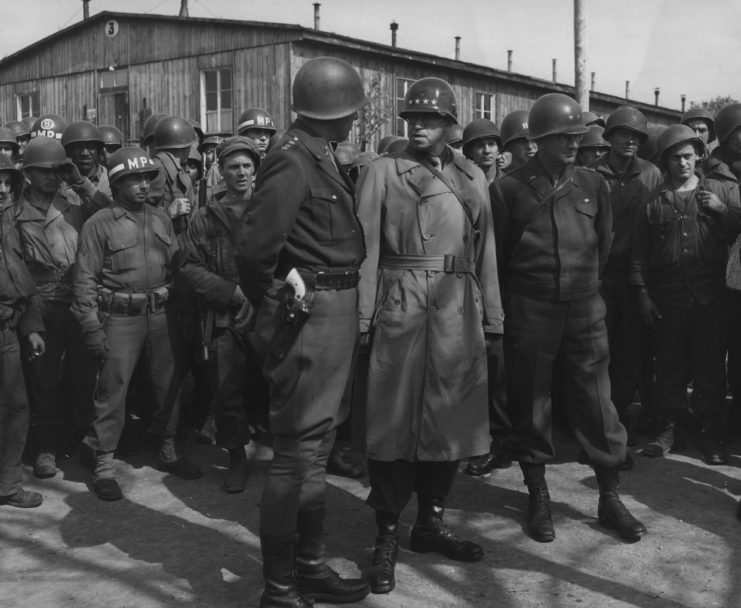
Utterly shocked by what he’d witnessed, Eisenhower worried there may come a day when the atrocities committed during the Holocaust would be rewritten, forgotten or denied. In order to preserve the truth, he took extra steps to expose the conditions of Ohrdruf.
He invited American media and Congressmen to visit the camp and observe the conditions for themselves. He then had pictures taken, to preserve the grueling sights. Additionally, he ordered all nearby American units not engaged in battle to come and observe the enemy’s crimes.
In what later became common practice for liberated concentration camps during the the Second World War, Eisenhower had German civilians living in the area tour Ohrdruf and bury the dead.
More from us: Looking Back At the Red Army’s Liberation of Auschwitz
Following the discovery and liberation of the concentration camp, Eisenhower succinctly said, “We are told the American soldier does not know what he is fighting for. Now, at least, we know what he is fighting against.”
